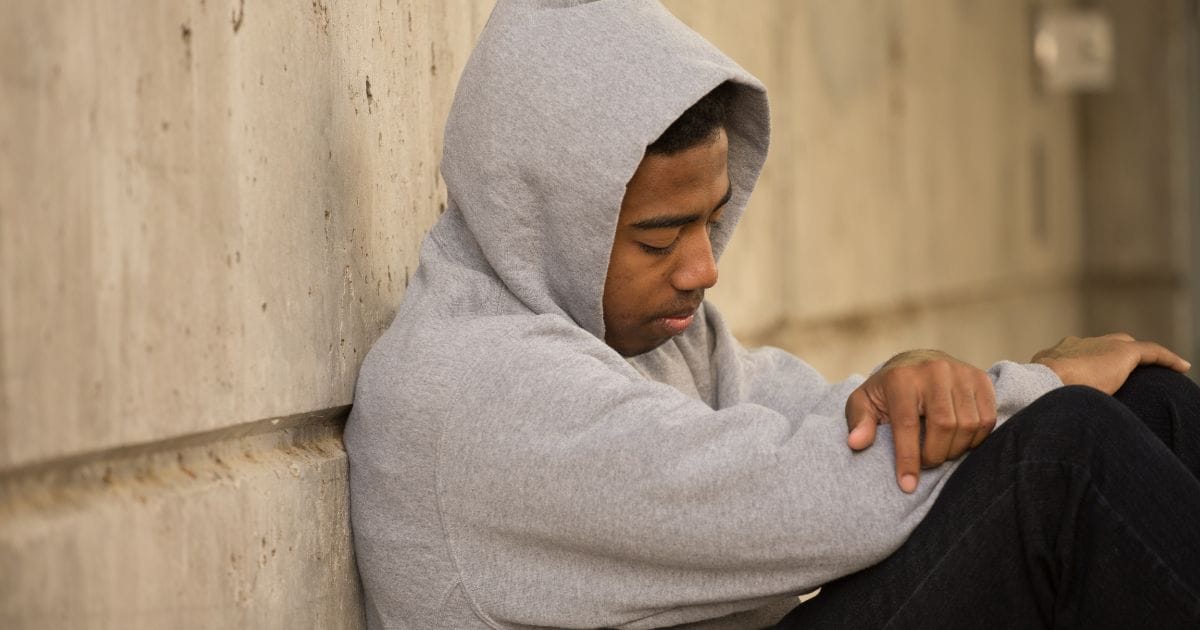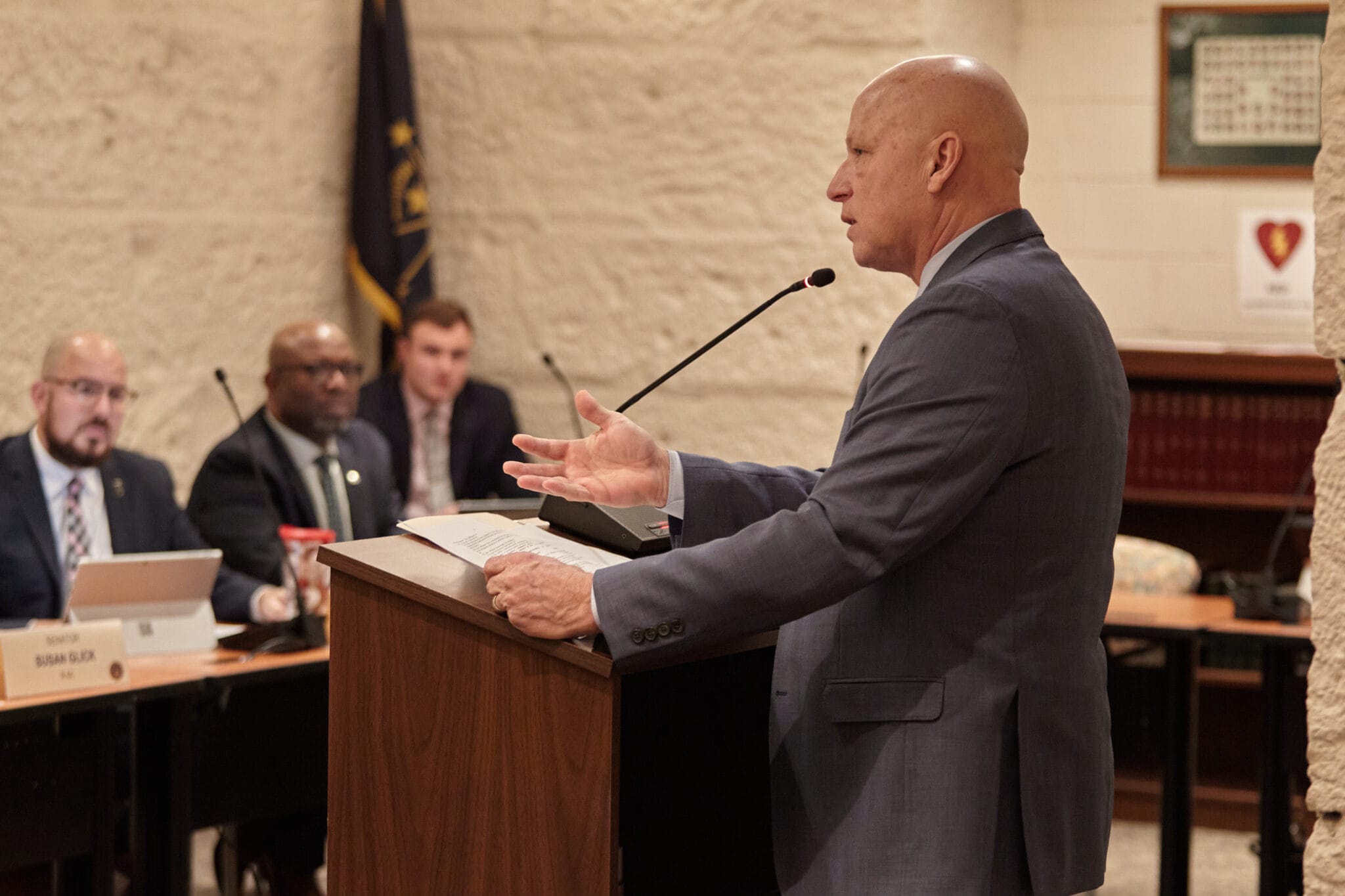Mental healthcare providers, law enforcement and legislators express optimism over Senate Enrolled Act 1
Several weeks ago, Porter-Starke Services — one of Indiana’s 24 community mental health clinics — received a call. A person was experiencing a mental health crisis and was suicidal, but the office was closing.
The only option left was Starke County’s hospital, which Sandy Carlson, Porter-Starke’s vice president of clinical services, said is small and not equipped to manage psychiatric patients. A crisis that began around 5 p.m. took until the early morning hours to stabilize the patient through hospitalization.
But under the mental health care transformation shepherded by Senate Enrolled Act 1, the individual could have gotten the help they needed in a more efficient and effective way.
“If we would have had a mobile crisis response at that moment, that was able to engage, we could have accelerated that whole process,” Carlson said. “The person, they wouldn’t have burned through resources at the ER, we wouldn’t have had to…spend that length of time, frustration, unknowing…it would have just been a direct contact with mobile crisis, they could have gotten them to where they need to be and then they’d be on their way to some treatment.”
The model proposed by the new law is part of a federal initiative to coordinate care and improve access to mental health care and can be broken down into three parts: someone to contact, someone to respond and a safe place to go for help. These pieces are the 988 crisis line, mobile assessment teams and crisis stabilization units.
The goal is to reroute people experiencing crises from hospitals and jails, freeing up overburdened medical providers and police officers and saving people from harming themselves or others. Indiana is currently one of more than 30 states receiving grant-funding for the transformation, but SEA1 carves out a path for the state to receive demonstration, a coveted position that ensures long-term funding.
A history of mental healthcare in Indiana
Indiana’s current framework of mental health care was established by President John F. Kennedy’s Community Mental Health Act in 1963, which allowed states to build their own structure.
Zoe Frantz, president of the Indiana Council of Community Mental Health Centers, said Indiana did a good job at the time. Frantz, who also serves on the Indiana Behavioral Health Commission, oversees the 24 CMHCs across the state.

In 2014, the Protecting Access to Medicare Act developed a federal standard for mental health care delivery in the form of certified community behavioral health clinics. These differ from CMHCs by coordinating mental health care with different stakeholders, like police and hospitals, and improving access to care overall, including 24/7 crisis services. Notably, the program stipulates that no one be denied service for their inability to pay — any costs for these individuals must be reduced or waived.
The ultimate goal of the legislation is to encourage states to transition their CMHCs to CCBHCs.
The changes come at a critical time for the Hoosier state. Mental healthcare is only becoming more necessary as workforce vacancies — currently at 20% according to Frantz — persist.
“We have seen an overall increase in [mental healthcare] demand by over 60%,” she said.
Frantz describes the new process like this: a person experiencing a crisis calls 988, a 24/7 mental health line, and is assessed over the phone. If the responder determines a mobile assessment team is needed, a group of providers will meet the person and determine if they need to go to a crisis stabilization unit. If not, the assessment team will connect the individual with an outpatient provider.
The steps are almost entirely implemented, Frantz said, with only crisis stabilization units still in development.
In Indiana, one out of every five people suffer from a mental illness, according to the IBHC report. Even when someone is not personally affected, Frantz said, many have a loved one who suffers from mental illness or addiction.
“Speaking personally with someone — a loved one — who was combating opioid use disorder a while back, it was really those cracks in our system that he fell through,” she said.
SEA 1 takes steps to treating mental illness more like a physical illness and preventing the extreme result of a suicide or overdose.
“I think it was the number one priority because it should be the number one priority,” Frantz said.
How will the new system be funded?
The new system is projected to cost $130 million per year when it’s fully mature and needs a long-term funding solution. At the same time, an IBHC report estimated the cost of untreated mental illness in Indiana at $4.2 billion a year.
The most recent state budget allocates just $100 million for the program over two years.
Mobile assessments are mostly covered by Substance Abuse and Mental Health Services Administration grants for the time being, Frantz said. That makes the system currently free for Medicaid recipients, although the future of that benefit remains uncertain as advocates search for a sustainable method.
Frantz, along with others like the bill’s author, Sen. Michael Crider, want to fund the system with a $1 surcharge for using 988. The surcharge method is used for 911 and brings in about $90 million a year.
However, legislators decided against the surcharge this session, saying the current budget was enough to support the system for now.
Indiana is also eligible for a federal payment structure if they demonstrate they’ve satisfied the program’s standards by March 2024. If approved, the full model with the federal payment structure will be implemented by 2027.
However, only 10 states will be selected in 2024, making the process competitive. If Indiana is not selected, Frantz said SEA 1 authorizes Indiana to make their own state plan amendment until they are selected, which they will have the opportunity for every two years. Almost every state is currently participating in the move to CCBHCs, although some are already demonstration states.
Demonstration states fund their systems through a prospective payment system, which reimburses providers a predetermined amount for providing services to Medicaid recipients. The goal of this system is to expand services and increase clients by addressing underlying costs.
So far, early results of the program are promising. After five years as a demonstration state, Missouri saw a 35% increase in access to care and $15 million in savings on hospital costs.
A historic legislative effort
Sen. Michael Crider, R-Greenfield, has long been an advocate for mental health care. In 2020, it was his bill that first established the IBHC, which gets a 2-year extension through SEA 1.
To Crider, mental health issues are at the root of many problems Hoosiers face, ranging from addiction to struggling with homelessness.
By expanding crisis services, the legislation serves to prevent these types of individuals from reaching “breakpoints” that might cause them to end up in emergency rooms or county jails, Crider said.
Part of that means an eventual shift from law enforcement responders to behavioral health specialists. Crider said the law enforcement officials he’s spoken to are both excited for quick crisis resolutions on the scene as well as less instances of having to treat mental illness while someone is incarcerated.
According to a report from the IBHC, 37% of people in state and federal prisons have been diagnosed with a mental illness, while 44% of the jail population has a mental illness. When it comes to police interaction, 27% of police shootings in 2015 involved a mental health crisis.
Crider also lauded the bill’s near-historic engagement.
“You rarely see the courts, the criminal justice system, law enforcement, the education space, the faith community, the business community and then legislators all align behind an idea like happened this year,” he said. “And so it’s a sign there’s need across the landscape for improvement…”
Perspectives from law enforcement, mental health providers
Mental healthcare is personal for former Boone County Sheriff Mike Nielsen.
Nielsen’s daughter, Officer Taylor Nielsen, was working at the Lebanon Police Department when the murder of a Zionsville woman and her son shook Taylor to the core. She struggled for months before she attempted suicide in 2016.
Since then, both Nielsen and his daughter have gone on a journey to promote officer wellness, which has been considered taboo in the past. Nielsen said some years have seen more officer deaths due to suicide than line-of-duty deaths.
“There is hope,” he said. “And it’s OK to show your emotions as a police officer.”
The push to change the culture signifies a larger trend of increasing awareness for mental health. As officers understand and talk about mental health, they are better able to put themselves in the shoes of inmates who are struggling, Nielsen explained.
In addition to advocating for officer wellness, Nielsen, who has been a law enforcement officer for 40 years, transformed the Boone County Jail from zero mental healthcare to 100 hours a week of care from therapists. The shift led to less fights and better communication, he said, and Nielsen even gets letters from people who have led successful lives after their release.
His passion caught the attention of Gov. Eric Holcomb, who appointed him to the IBHC.
Nielsen said a majority of jails don’t have the resources to help people in crisis — something the new system will address by allowing people to be evaluated before they’re held.
“It’s gonna be a game changer for the state of Indiana,” Nielsen said.
Meanwhile, two community mental health centers — Porter-Starke and 4C Health — are part of 19 organizations operating pilot versions of what’s to come, according to Frantz.
Nicole Hiatt-Drang, Chief Clinical Officer at 4C Health said the center’s CSU has been open about two years now. Since then, the center has had over a million dollars in cost savings by providing care without requiring inpatient stay.
Another success for 4C Health has been the 988 line, which has fielded 3,333 calls at the clinic in almost three years. Of those, 67% have been stabilized, meaning they have not ended up in inpatient care or jail.
Matt Burden, president of Porter-Starke, said CCBHCs allow clinics to serve uninsured clients and the Medicaid population, the latter of which makes up the majority of people currently served by CMHCs.
“I think that it’s gonna revolutionize things for the better,” Burden said.
This article originally appeared on the Indiana Capital Chronicle.







